José Manuel Gómez Gufi
I spend the day with producer Fernando Vacas surrounded by rockers, indies and flamencos, and when the curtain goes up at the Madrid Flamenco festival, there are at least ten women turning “La Violetera” into tangos. That’s when you realize you haven’t done your homework, and you can’t brag about a master’s in deep flamenco. There are artists you haven’t seen on a stage in years, such as Aurora Losada, heir to the “caño roto” sound, others are recognizable for their youth and their vocal placement, such as María, daughter and granddaughter of the Jerez cataclysms (the Terremotos). Impossible not to recognize Tía Juana la del Pipa, whose mike failed, and when they brought her another, she was dueling with María Terremoto and placed the mike in her cleavage because she needed her hands to close out the soleá por bulería (but neither Wynton Marsalis nor I have finished our master’s in flamenco forms, I asked Morente and he gave me the seal of approval in exchange for a drink and an embrace).
Between one thing and another, there’s no need to talk about the sound except when it again failed with Maui in the most madcap sketch ever seen in contemporary flamenco (Pericón and Chano Lobato play in the league of the classics). Maui appears from the back of the audience, barefoot, dressed in one of those fantasy suits from the corral and arriving late for the rehearsal, when Naike Ponce appears dressed as a flamenco behind a grating with her carnations, while La Shica refused to show off her superpop hairdo and her baby bump. So what do they rehearse? Soleá. With the cello of Maui, the dancing of Shica and Naike reading a paper behind the carnations on the grating (which was brought from home, but that’s another story) and they’ve got everyone bursting at the seams with laughter when they do the joke of the season. -So what’ll we do? Something from Niño de Elche?. Maui is very much inclined to comment on modern fads and in one of her songs she says “let’s lend a hand to Pablo Alborán”. That’s how open she is, and her colleagues as well, and they decide to sing the one about “La Noche Perfecta”, a pop song from Maui’s record on Nuevos Medios and Naike and La Shica do what the great flamenco stars have always done, they sing with their own personalities. At this point, Naike has taken off the flamenco dress to show off the red (pop illusion) dress from Senegal that combined perfectly with the guffaws and with a black and white photo of the Pegamoides. Just great.
For Lola Flores
It had all started out with the Violetera, a symbol of Madrid and of women. Director Rojas spoke and said it had been 23 years since the death of Lola Flores, and I remember I’d been at that wake, at the same place, paying tribute to a woman who was free, a beacon of liberty and even the master of ceremonies Enrique Pantoja became serious and crossed himself in front of her portrait. A pianist of the new generation, Pablo Rubén Maldonado, introduced the first scene with Enrique Pantoja in the role of master of ceremonies. After the first impression, María Vargas and María Mezcle, very pregnant, got into siguiriyas, then Montse Cortés and Aurora sang one or two ballads, María La Coneja played castanets and Blanca del Rey did a monologue about how good it is to go to the theater and mark a few dance steps with street shoes, something that later took place in the bulerías in which most of the artists wore new clothes for the occasion without considering the famous little bulerías dance, and the best part was seeing María La Coneja in flat shoes and wearing her hair in a bun decorated with wildflowers, giving a true lesson in flavor and self-assuredness as she walked elegantly, and the show was rounded out with Encarna Anillo and Rocío Bazán, and the curtain came down on the last dance steps of Enrique Pantoja and Tía Juana.
Photos & video: Rafael Manjavacas
Video

Photo gallery



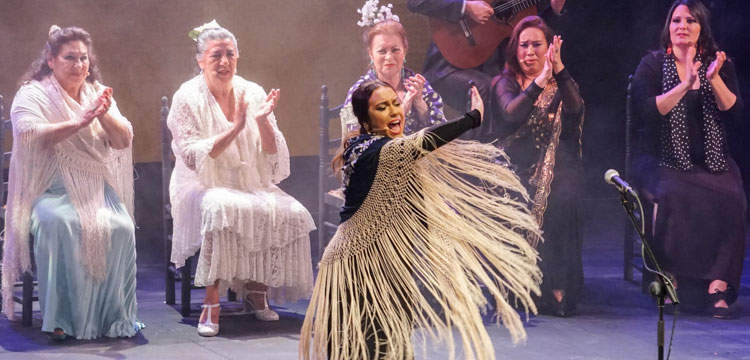

























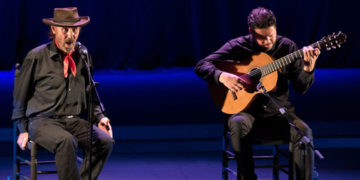
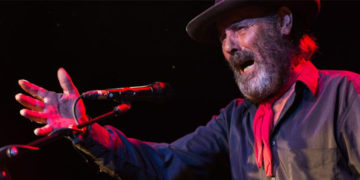

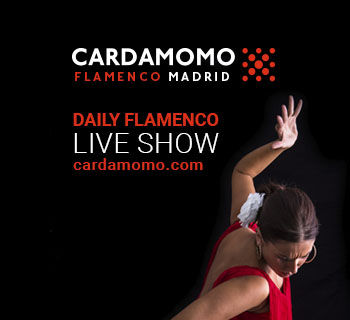
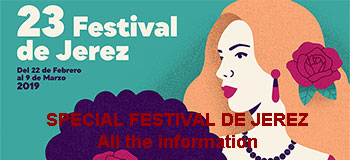
You must be logged in to post a comment.